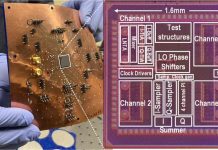Taiwan announced a $200 million investment for microchip production in Lithuania, with a further $1 billion credit programme for innovation
The investment, amounting to £148 million, could be used for microchip production – cutting China out of the supply chain. Taiwan has also launched a $1 billion credit programme, which will go towards funding projects between Lithuanian and Taiwanese companies.
The Taiwan Semiconductor Manufacturing Company (TSMC) accounts for more than 50% of the global microchip market, with £84.6 billion profit in 2020.
The future of microchip supply chains in the East
Currently, China perceives Taiwan to be part of its own territory. Chinese leaders would prefer that the Taiwanese Government did not make deals with other countries, like an autonomous State. China has downgraded diplomatic relations with Lithuania, putting pressure on their trade links, after the Taiwanese de-facto embassy was established on 18 November, 2021.
“This is the first time for the Taiwanese government to set up such an investment fund,” said Eric Huang, head of the Taiwanese Representative Office in Vilnius.
“When we study the possibility for semiconductor investment in Lithuania, we will consider the question in the light of the whole European Union market, because then it will be more sustainable, it will be profitable.”
Taiwan sees “shared values” with Lithuania
The Taiwanese Representative Office in Vilnius, Lithuania, is essentially an embassy.
On 18 November, 2021, the Taiwanese Representative Office said: “The two sides signed six MOUs, ushering in a shared vision of blueprint for closer cooperation ahead, laying a solid foundation for greater bonds of our two peoples. Taiwan will cherish and promote this new friendship based on our shared values.”
Links between Taiwan and Lithuania have been strong in early 2022, with Taiwan buying 20,000 bottles of Lithuania rum bound for China. This recent development could lead to an investment into the microchip production market, which is currently a key ambition of technological power for China.
The Chinese Government set a goal of 70% self-sufficiency in creating semiconductors, but was only at 16% in 2020.











